Weed of the Week: Broomrapes
Published on 19 December 2022
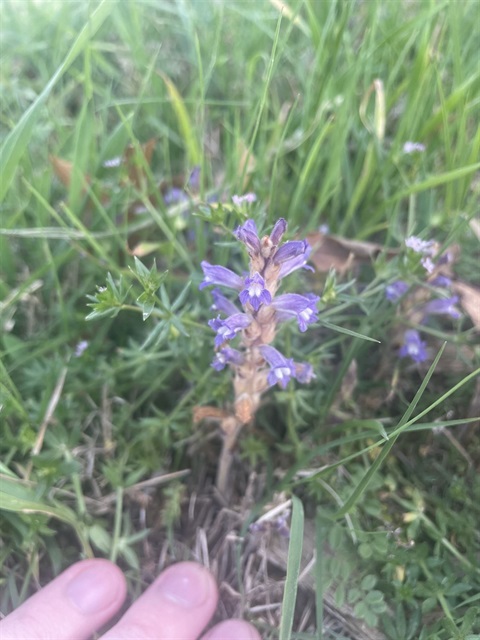
Welcome to Weed of the Week, a series of articles where we give you the information you need to protect your property and our region from the Snowy Monaro’s priority weeds.
This week we’re looking at Broomrapes.
Snowy Monaro Regional Council is calling on all community members to get to know the weed species that can impact our region. By knowing what to look for, we can all do our part to protect our environment, help our farmers and support our community.
The impact of weeds on our community can be devastating and is estimated to cost the NSW economy about $1.8 billion annually (NSW Department of Industry, 2018).
Branched Broomrape
What are Broomrapes?
Broomrapes (Orobanche species) are a group of plants that parasitise a wide range of crops and other broadleaf plant species. Of these, Branched Broomrape poses the greatest risk to Australian crops, in addition to a number of other species which are not yet known to have breached Australian borders. Due to the significant risk that they pose, Broomrapes are classified prohibited matter in NSW and are regulated under the Biosecurity Act 2015.
These plants pose a particular threat to broadleaf grain and vegetable production across the country. Being parasitic, all broomrapes draw their nutrients by attaching to the stem and root system of other plants. Owing to this, broomrapes don’t produce chlorophyll – the green pigment that plants use to get energy from sunlight – so their appearance is unique.
There are two species of broomrapes in NSW that are not prohibited matter and have not shown any serious impacts:
- Clover broomrape (Orobanche minor), which is an introduced species, common and widely spread across southern Australia
- Australian broomrape (Orobanche cernua var. australiana), which is a native species found in western NSW
Broomrapes grow to a height of between 10-60cm with yellow, beige or straw-coloured stems topped with yellow, white or blue flowers. Seeds are very small and dark coloured, and plants may be in bloom from winter through to spring.
Broomrapes are only detectable when flowering – otherwise there is no part of the plant visible aboveground.
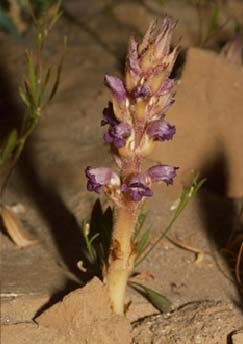
Australian Broomrape - South Australian Department for Environment and Water
Where are Broomrapes found?
Thankfully there are currently no known infestations of the Prohibited Matter Broomrapes in NSW.
These species continue to pose problems in other parts of the country – farmers in South Australia have struggled with crop infestations in the Murray region in particular.
Broomrapes are serious crop weeds cross Africa, Asia, Europe and the Americas.
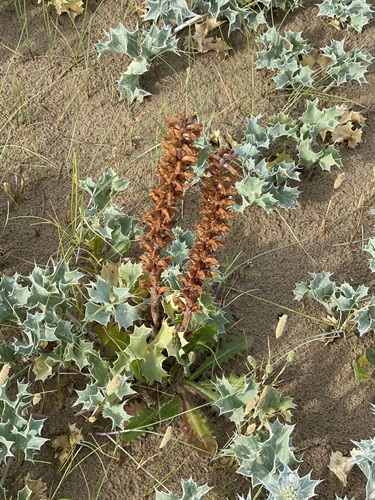
Clover Broomrape
Why are Broomrapes a problem?
Broomrapes parasitise broad leaf plants from food crops to canola, Lucerne and clovers, and if allowed to establish can completely overrun crop growing operations and broadleaf based pastures, thereby reducing crop yields by up to 70%.
The presence of Prohibited Matter Broomrapes can threaten export markets.
Each plant drops thousands of tiny seeds every year, only a couple of weeks after flowering.
Plants are impossible to see when not in flower, as there is no visible part of the plant above ground, making eradication extremely difficult.
Australia’s agricultural output, food security and the livelihoods of our farmers are all threatened by any potential incursion of Broomrapes.
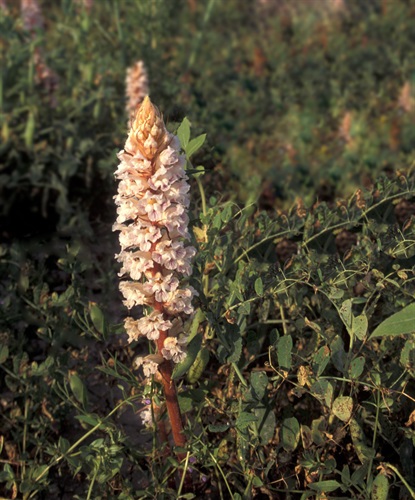
Crenate Broomrape - CC BY-NC - Aleksandr Levon
What do you do if you detect Broomrapes?
Broomrapes, like other Prohibited Matter weeds in NSW, must be immediately reported.
Do not attempt to destroy or control Broomrapes on your own. If you find, or suspect that you have found Broomrapes on your property, in public, or anywhere else in our region – call Council on 1300 345 345 or the NSW Biosecurity Helpline on 1800 680 244 immediately.
Council, NSW Department of Primary Industries and other partner agencies will initiate an immediate emergency response program for Prohibited Matter Broomrapes at no cost to the landowner in an attempt to contain and eliminate the incursion.
Eliminating a weed like Broomrape in its early stages of invasion provides significantly greater return on investment than trying to manage it once established.
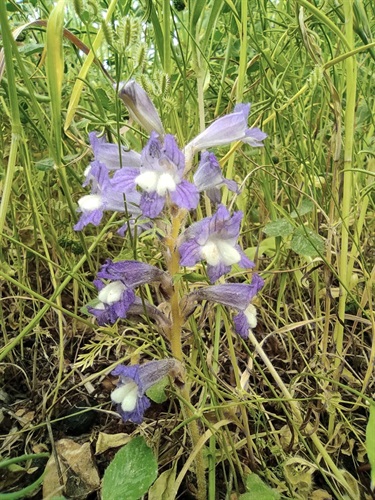
Egyptian Broomrape
What can you do?
- Learn to identify Broomrapes and seek immediate advice if suspect plants are identified on your property
- Clean machinery and source clean topsoil, fill and other earthen materials
- Carefully consider where you source hay, grain and other supplies
- Maintain strong, competitive pastures
- Contact Council’s Biosecurity officers if you suspect the presence of Broomrapes. Our staff provide a free, onsite weed identification and advisory service.
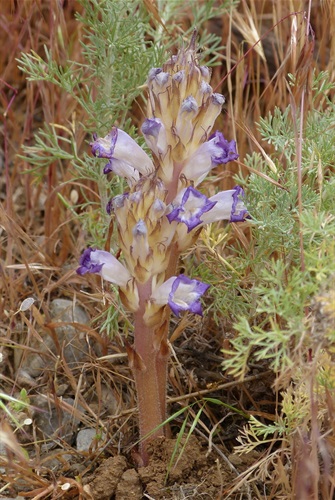
Nodding Broomrape - BY-NC - Benoit Segerer
Download the free NSW WeedWise app for detailed information on how to identify and manage local priority weeds. Visit www.dpi.nsw.gov.au/biosecurity/weeds
Visit Council’s website to understand how we can help you with weed management. www.snowymonaro.nsw.gov.au/Environment-Waste-and-Weeds/Biosecurity-and-Weeds
Visit the Department of Primary Industries (DPI) website for information on weed control methods – www.dpi.nsw.gov.au/biosecurity/weeds/weed-control
Contact Snowy Monaro Regional Council if you have any questions regarding weeds on your property or in your neighbourhood. Call 1300 345 345 to be connected to our Biosecurity Officers who specialise in weed management.
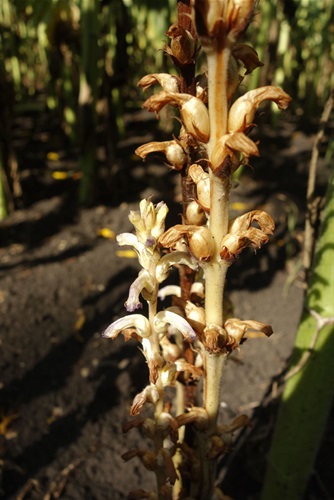
Sunflower Broomrape